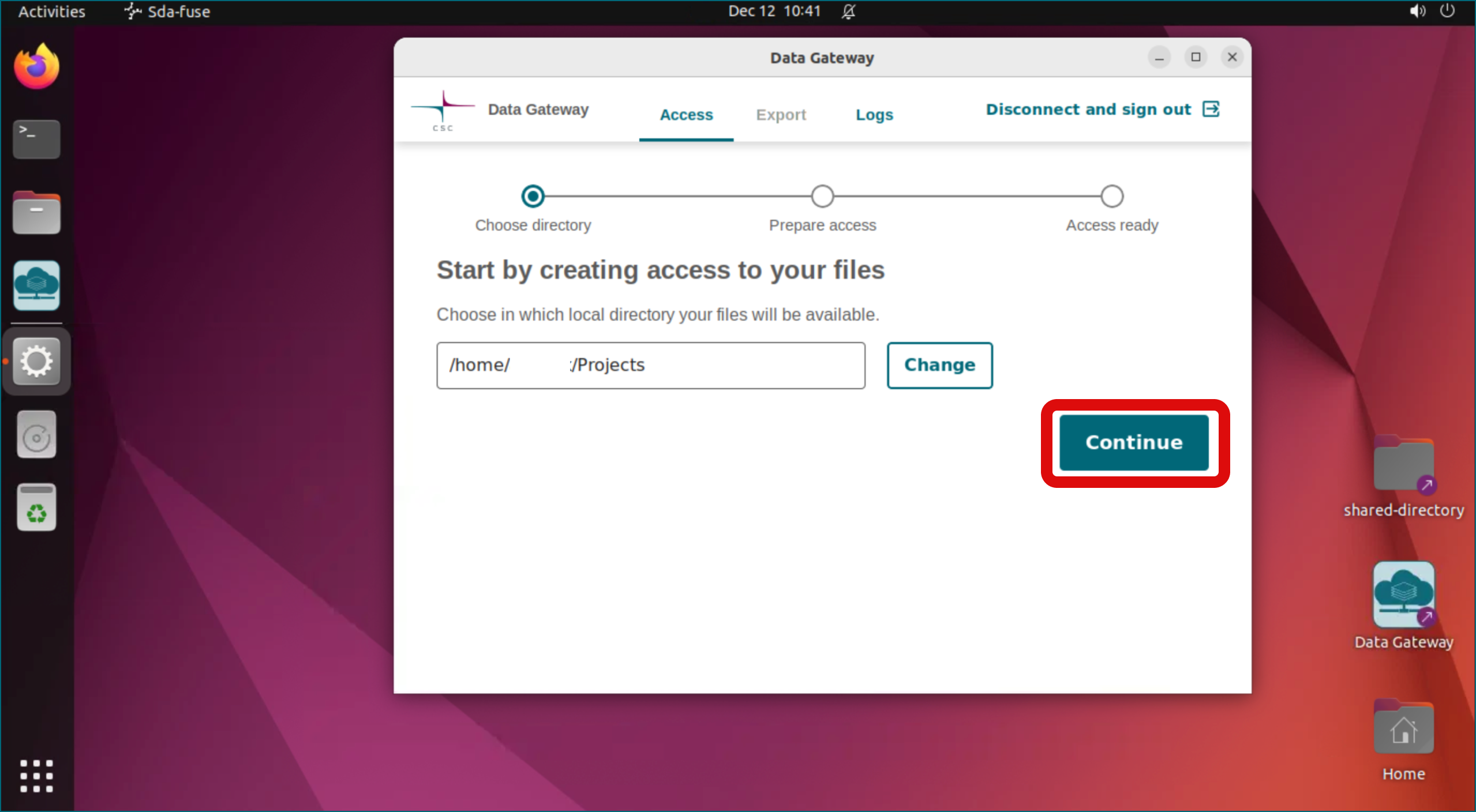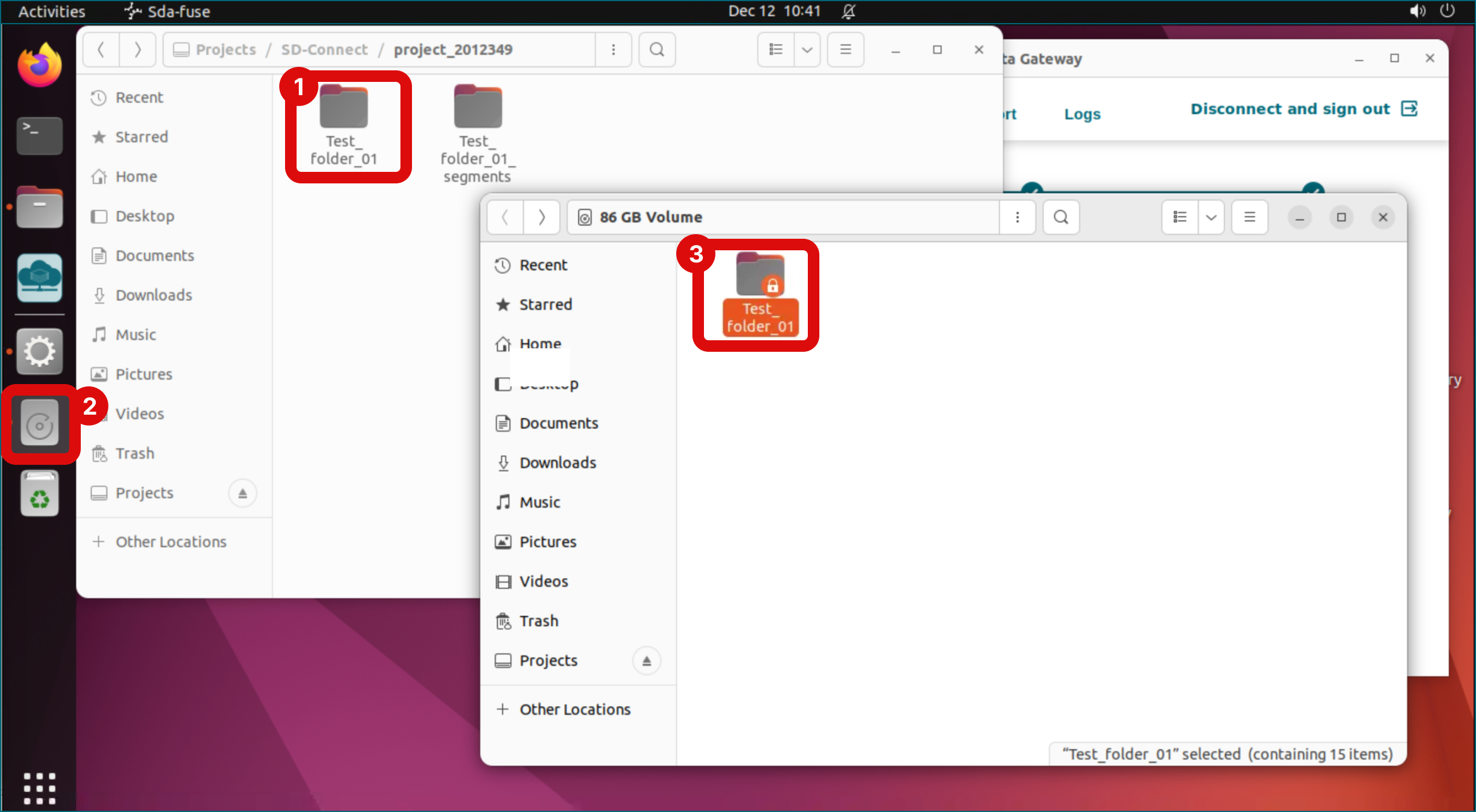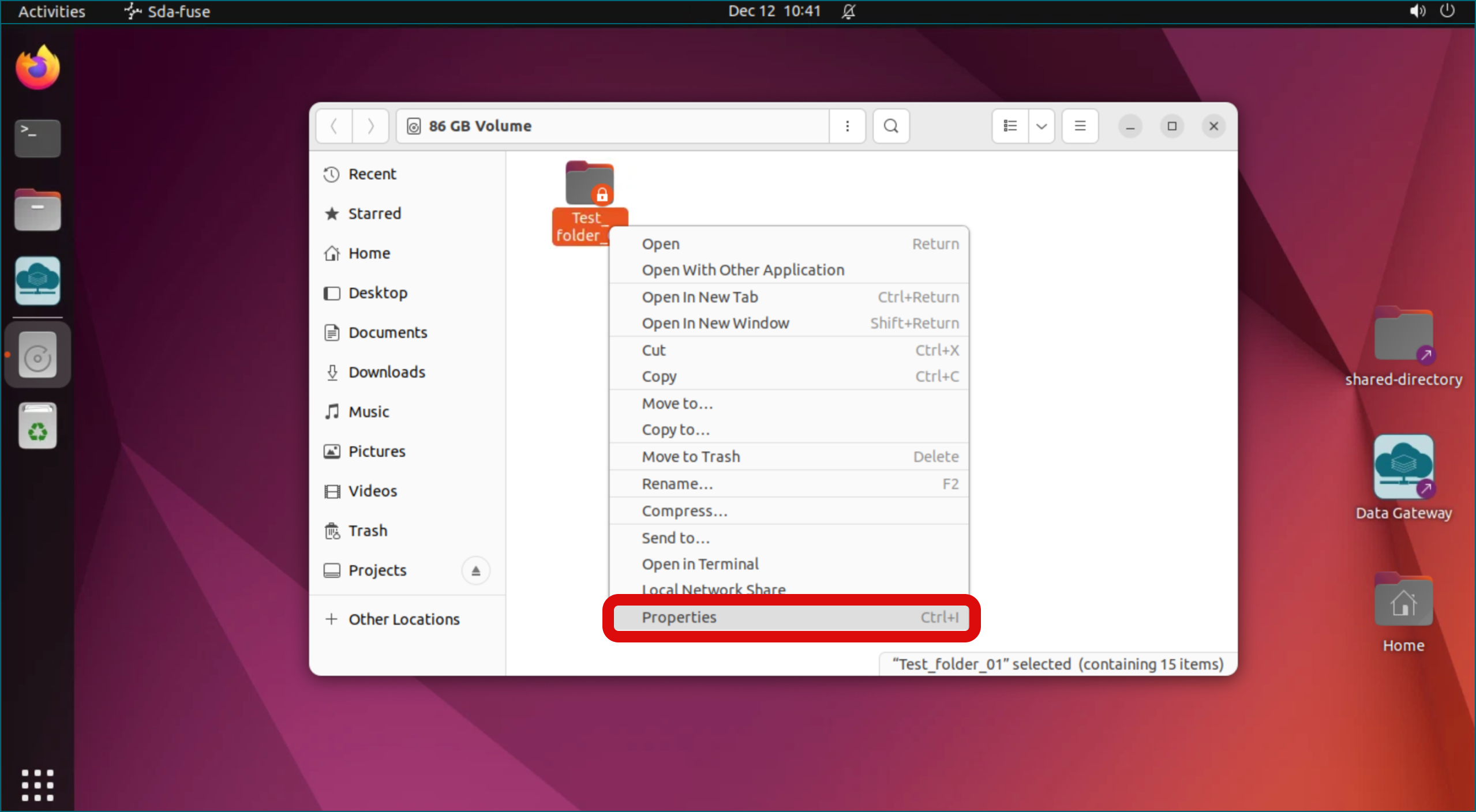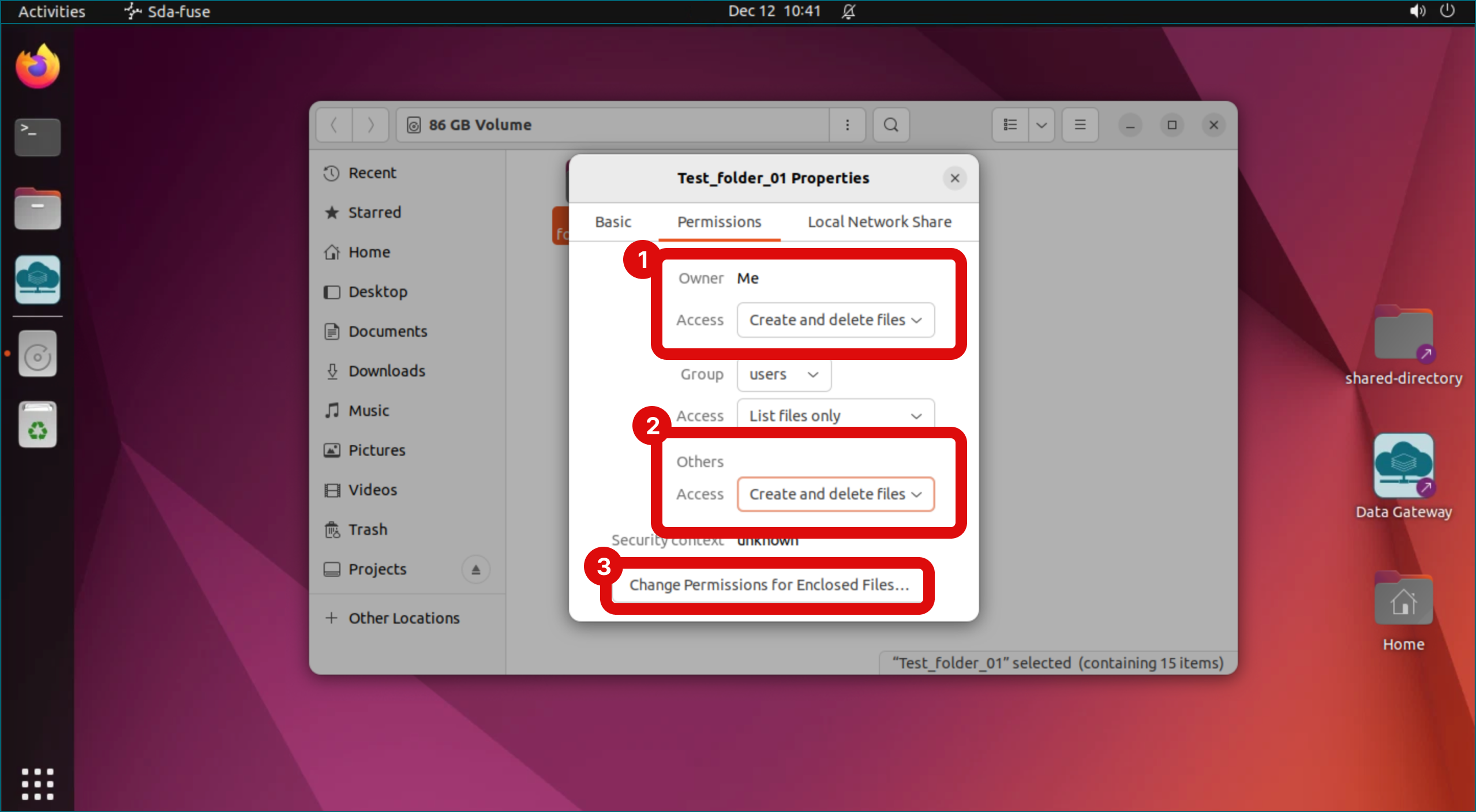Table of contents of user guide
Importing data in your virtual desktop
Prerequisites
Once a virtual desktop is created, each CSC project member can access it through their browser. The virtual desktop is isolated from the internet, so data access must be done through the Data Gateway application. This application allows you to import data from SD Connect or SD Apply. Imported data is saved on the virtual desktop’s external volume for secure analysis.
Additional information
- What is an external volume? Your virtual desktop’s local storage is limited, so it’s recommended to save large data files and collaborative work on the external volume. This volume acts like an external hard drive that can be detached and reattached to different desktops, allowing project members to share and edit files stored there.
- Adding the external volume: the external volume can only be added when creating a new virtual desktop
- Additional volume space: if you need additional volume space (more than 200 GB), you can request it by writing to CSC Service Desk, (subject: SD Desktop), please be aware that volume extensions are only possible before any data has been added to the volume.
Step by step
1. Access data via the Data Gateway application
- Access your virtual desktop.
-
Launch Data Gateway by clicking icon on the left side of desktop.

-
Select:
- SD Connect: This option is for accessing data you’ve uploaded directly to SD Connect. Enter your CSC username and password (note that copy-paste is disabled for security, so you need to type credentials manually).
- SD Apply: This option is accessible only if the data controller has granted you permission.
- Click Login and then Continue.

- In the next window click Continue. Data Gateway establishes a secure connection between your virtual desktop and your data, and creates Projects folder on your virtual desktop (and accessible from the terminal).

- In the next window click Open folder to view all files stored in SD Connect or SD Apply. Files are available in read-only mode for secure access. To view them, right-click the file and select the desired application to open it.
Note
In SD Desktop, you can access only encrypted files. Accessing unencrypted data or files encrypted only with your public encryption key will result in an error.

2. Import a copy of the files to your virtual desktop's volume
Keep Data Gateway open and click Open folder.
- Select and copy the files or folders from the Projects folder.
- Open Volume by clicking icon on the left side of desktop.
- Paste files or folders into Volume. Files or folders will automatically decrypt during the copy process and become available for analysis.

3. Set permissions for shared access
After copying files to volume, adjust permissions for folders and files to enable access for other project members. By default, permissions are limited to your access only (orange lock icon).
- Right-click the folder copied to Volume and select Properties to adjust folder permissions.
- Open the Permissions tab.
- Set permissions to Create and Delete Files so they remain accessible when the volume is reattached to a different virtual desktop.
- Owner -> Access -> Select “Create and delete files”.
- Others -> Access -> Select “Create and delete files”.
- Close the permission tab (top left corner).
- The orange lock icon will no longer be visible next to the folder and can now be edited by all project members.


- Next select Change Permissions for Enclosed Files to adjust file permisssions inside the folder.
- Set permissions to:
- Owner -> Files -> Select “Read and write”. Folders -> Select “Create and delete files”.
- Others -> Files -> Select “Read and write”. Folders -> Select “Create and delete files”.
- Click Change.
- Close the permission tab (top left corner).
- The orange lock icon will no longer be visible next to the files and can now be edited by all project members.
- Set permissions to:

4. Close Data Gateway
You can now disconnect the Data Gateway connection if no further data accessor import are needed by clicking Disconnect and sign out.
Note
If more than 10 Data Gateway connection are left open, Data Gateway will stop working. In this case, contact CSC Service Desk (subject: SD Desktop).
5. Log out
Log out from virtual desktop.